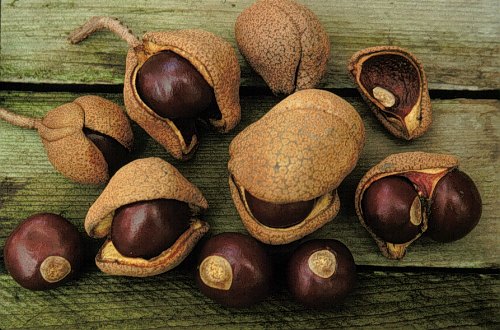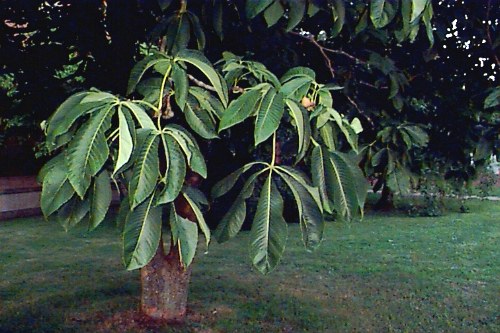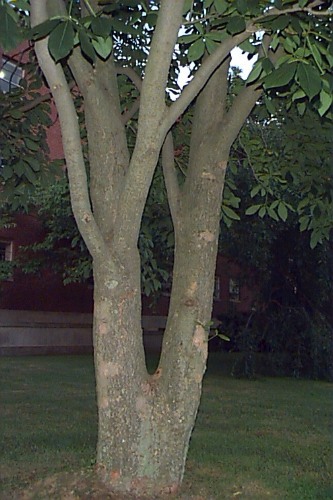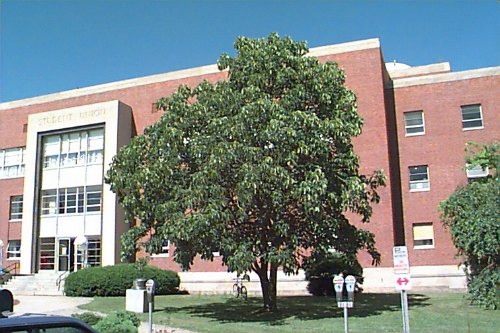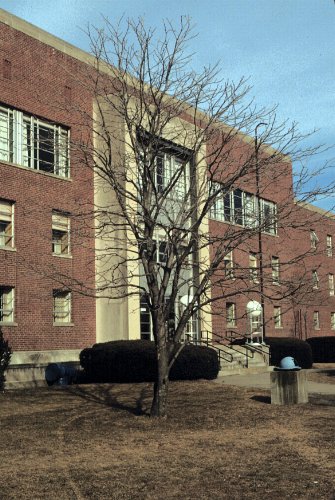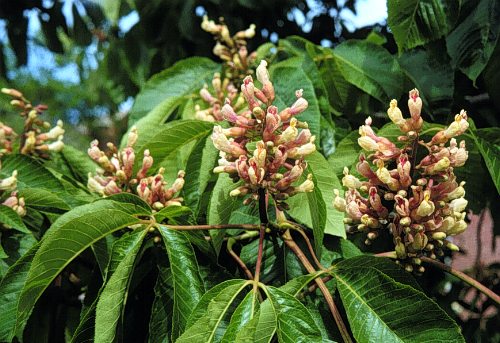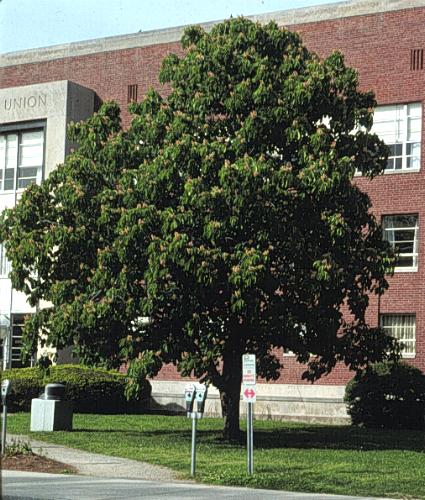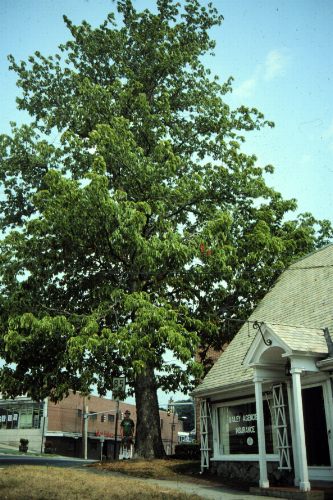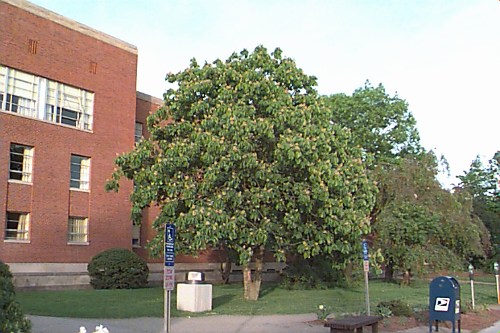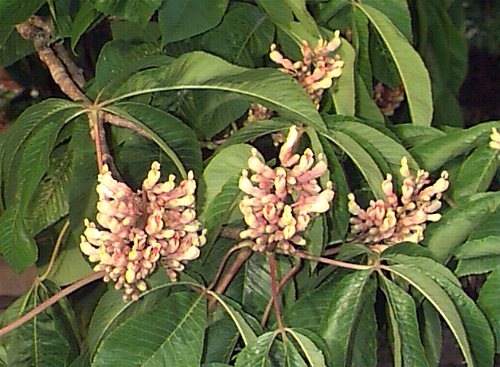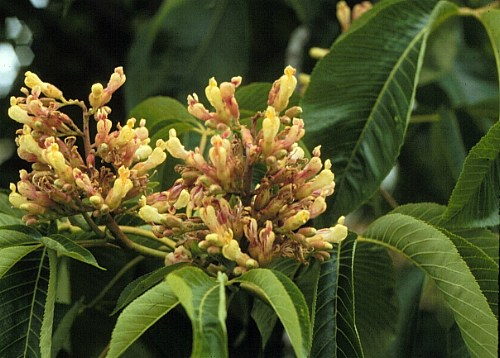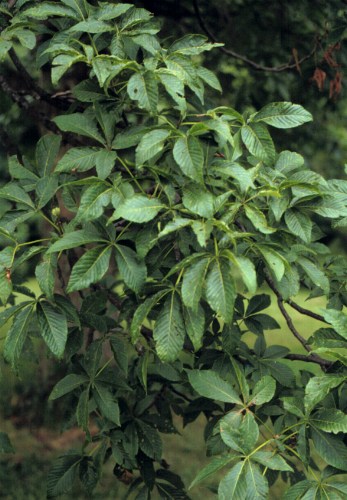Aesculus flava
Yellow Buckeye
Hippocastanaceae
ExpandHabitat
- native to mid-Atlantic United States, throughout central Appalachia from the Ohio River Valley to northern Georgia
- zone 3
Habit and Form
- a large deciduous tree, typically 60' to 80' tall, but can be over 100' tall
- upright-oval to spreading crown. Several open-grown specimens I have seen had a rounded or mushroom-shaped top
- texture is medium to coarse
Summer Foliage
- opposite, palmately compound, with 5 leaflets. Each leaflet is 4" to 6" long and elliptical
- excellent dark green foliage that is glabrous when mature
- less troubled by foliar diseases and problems than other buckeyes
Autumn Foliage
- has better color than other Aesculus
- can be a nice yellow or pale orange
Flowers
- blooms in May, yellow or yellow green
- panicles are 6" tall and 2" to 3" wide
Fruit
- 2" to 2.5" capsule containing 2 seeds
- fruit is smooth, pear-shaped, leathery and tan
Bark
- interesting gray and brown
- old trunks exhibit bark with large flat scales and plates
Culture
- prefers a deep, moist, well-drained soil
- avoid excessively hot, dry locations which can induce leaf scorch problems
- full sun for good development
- transplant B&B or from container only; has a fleshy, sparsely-branched root system
Landscape Use
- needs room to develop
- for large lawns on estates and campus, and in public spaces and parks
- definitely the nicest of the large Aesculus sp.
- excellent choice for shade and variety in the landscape. Plus it also has flowers
Liabilities
- may be difficult to locate in the trade, uncommon and somewhat difficult for nurseries to mass produce quickly
- leaf scorch and leaf blotch
- fruit litter can be messy
- numerous insects and diseases can be a problem, but A. flava is the least bothered of all the species
- have observed many beautiful specimens over the years
- can be difficult to grow grass beneath due to shade
ID Features
- large, palmately-compound leaves
- fruit husk smooth; distinguishes A. flava from A. hippocastanum, A. glabra and A. x carnea which have spined husks
- large, non-resinous buds
Propagation
- by seed
- young plants develop slowly and produce only one growth flush per year despite treatments to accelerate growth
Cultivars/Varieties
- none
